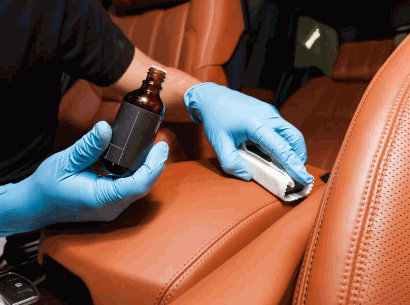Table Of Contents
Leather car seats are a luxurious and stylish addition to any vehicle, but they require regular maintenance to keep them looking their best. Proper cleaning not only enhances the appearance of your car's interior but also helps to prolong the life of the leather.
In this comprehensive guide, we will cover everything you need to know about cleaning and maintaining leather car seats, including the tools and materials required, the best cleaning products to use, and step-by-step instructions for deep cleaning. We'll discuss how often you should clean your leather car seats and provide valuable tips for maintaining their pristine condition. Whether you're a car enthusiast or simply want to preserve the investment in your vehicle, this article will equip you with the knowledge to effectively care for your leather car seats.
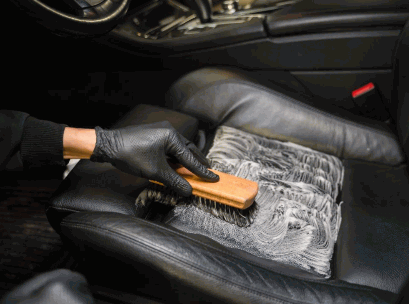
Why Is It Important To Clean Leather Car Seats?
Regular cleaning of leather car seats is crucial to maintain their quality and prolong their lifespan. Proper maintenance and care help protect the leather from stains, dirt, and grime, ensuring that the interior upholstery remains in top condition.
It also contributes to the overall aesthetics of the car's interior, enhancing its appeal and value. Regular cleaning prevents the accumulation of debris and oils that can lead to deterioration and cracking of the leather over time.
By investing a little time and effort into cleaning and conditioning leather car seats, you can significantly extend their longevity and keep them looking fresh and inviting for years to come.
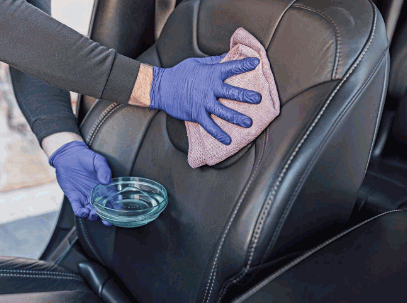
What Are The Tools And Materials Needed For Cleaning Leather Car Seats?
Cleaning leather car seats requires a specific set of tools and materials to ensure effective maintenance and care. Key items include a vacuum, soft brush, mild soap, water, and a quality leather conditioner or protectant.
What Type Of Leather Cleaner Should You Use?
Selecting the right leather cleaner for car seats is essential to protect the interior upholstery and ensure effective maintenance. Professional cleaning products or recommended conditioners can provide optimal care for different types of leather.
They help in preserving the natural suppleness and luster of the leather, preventing it from drying out and cracking. Regular cleaning with suitable products also removes dirt, grime, and oils from the seats, thus maintaining a fresh and inviting interior.
The right cleaner can protect against UV damage and other environmental factors, prolonging the lifespan of the leather upholstery. Investing in the appropriate leather cleaner not only enhances the appearance of car seats but also ensures their durability and longevity.
Delve into: How To Clean Leather Stains On Purse
What Other Cleaning Products Can Be Used?
In addition to dedicated leather cleaners, mild soap, water, and specialized protectants can also be used for cleaning and maintaining leather car seats. These products are effective in addressing stains, dirt, and grime while providing essential care and protection.
Mild soap and water are gentle yet effective for removing surface dirt and light stains on leather car seats. They offer a budget-friendly alternative to dedicated leather cleaners.
Specialized protectants, such as leather conditioners and UV protectants, play a crucial role in maintaining the suppleness and appearance of the leather while safeguarding it from sun damage and aging. When used in combination, these alternative cleaning products can extend the lifespan and luster of leather upholstery in cars.
What Tools Are Needed For Deep Cleaning?
Deep cleaning of leather car seats requires specialized tools such as a vacuum, soft brush, and quality conditioner or protectant. These tools ensure thorough removal of dirt and grime while providing essential care to maintain the leather's quality.
A vacuum with a soft brush attachment effectively sucks up dirt and debris from the leather's crevices, ensuring a meticulous clean. Applying a quality conditioner or protectant not only restores moisture and suppleness to the leather but also forms a protective barrier against stains and UV damage. This comprehensive approach not only cleans the seats but also safeguards the leather, prolonging its lifespan and maintaining its luxurious appearance.
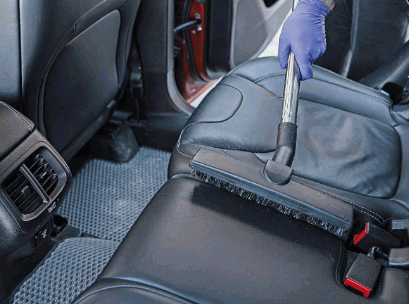
How To Clean Leather Car Seats?
Cleaning leather car seats involves a systematic process that includes specific steps and techniques to ensure optimal care. Utilizing quality conditioner and protectant, while adhering to practical tips and do's and don'ts, is essential for effective leather maintenance.
This starts with gently vacuuming the seats to remove any surface dirt and debris. Then, a mild leather cleaner should be applied using a soft-bristled brush to prevent scratching. After wiping away the cleaner with a damp cloth, it's crucial to thoroughly dry the seats. Once the leather is dry, applying a high-quality conditioner helps to keep it supple and prevent cracking. Regularly using a protectant can safeguard the leather from UV damage and stains, prolonging its lifespan. By following these steps and integrating effective techniques, one can maintain pristine leather car seats for years to come.
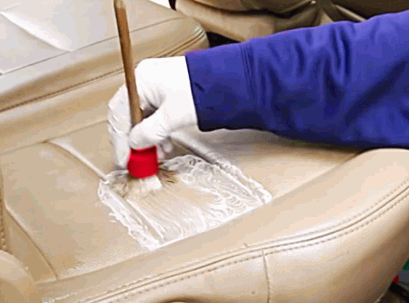
Step 1: Vacuum The Seats
The initial step in cleaning leather car seats involves thorough vacuuming to remove any surface debris, stains, dirt, or grime. This process is essential for effective maintenance and care of the upholstery.
Vacuuming is crucial as it helps in getting rid of loose particles that can scratch and damage the leather surface over time. By removing these particles, you not only improve the appearance of the seats but also prevent potential wear and tear. Vacuuming prepares the leather for deeper cleaning and conditioning, ensuring that any further cleaning products can penetrate the material effectively. It sets the stage for a more thorough and successful cleaning process, ultimately extending the lifespan of your leather car seats.
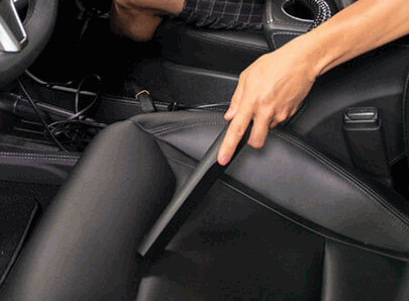
Step 2: Test The Cleaner On A Small Area
Before proceeding with cleaning, it is important to test the selected cleaner on a small, inconspicuous area of the leather car seats. This precaution ensures that the cleaner is suitable for maintaining the upholstery and effectively addressing stains, dirt, and grime.
It is crucial to understand that different cleaners and products may have varying effects on leather upholstery. By conducting a small area test, you can assess the cleaner's impact on colorfastness and texture. This process also enables you to confirm that the cleaner does not cause any adverse reactions such as discoloration or damage. Ultimately, this simple step can prevent potential mishaps and ensure that the chosen cleaner is compatible with the car seats, promoting effective care, protection, and maintenance of the upholstery.
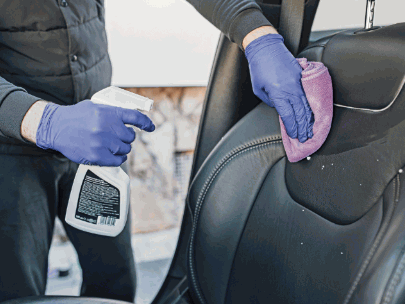
Step 3: Apply The Cleaner
Applying the selected cleaner to the leather car seats is a critical step in addressing stains, dirt, and grime while ensuring essential care and protection for the upholstery. Proper application techniques contribute to maintaining the quality of the leather.
This process not only removes surface dirt but also penetrates the leather to eliminate embedded particles. Regular cleaning prevents the buildup of oils and debris, preserving the supple texture of the leather and extending its lifespan.
Beyond aesthetics, a clean and well-maintained interior also contributes to a more hygienic driving environment, reducing the risk of allergens and bacteria accumulation. Using specialized leather conditioners after cleaning helps to keep the upholstery supple and prevents cracking or drying out over time.
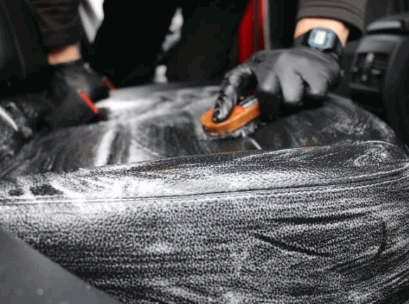
Step 4: Scrub The Seats
Gently scrubbing the seats with the appropriate tools and products is essential for effectively removing stains, dirt, and grime from the leather. This process contributes to maintaining the upholstery's quality and applying essential care and protection.
Regularly cleaning and treating the leather seats can help prevent premature wear and tear while preserving their luxurious appearance. By gently removing accumulated debris and stains, you not only restore the luster of the leather but also ensure that it remains supple and resistant to cracking. Using specialized leather conditioners and protectants after cleaning can further shield the seats from damage caused by sunlight, spills, and natural oils on the skin, thereby prolonging their lifespan and enhancing your driving experience.
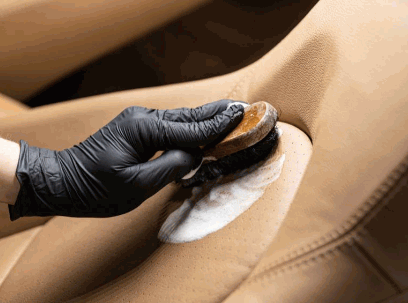
Step 5: Wipe Down With A Damp Cloth
Using a damp cloth to wipe down the leather car seats is crucial for removing excess cleaner and residual stains, dirt, or grime. This step contributes to providing essential care and protection for the upholstery.
The damp cloth not only helps in lifting off any remaining cleaning product but also ensures that any stubborn stains or dirt are properly addressed. Regularly wiping down the seats with a damp cloth can also prevent the buildup of grime and protect the leather from premature wear and tear. This process not only cleans the seats but also helps in maintaining the natural shine and texture of the leather, ultimately extending the life of your car's upholstery.
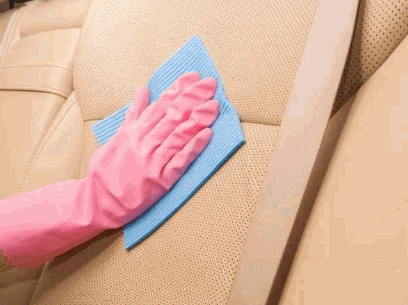
Step 6: Dry The Seats
Thoroughly drying the leather car seats after cleaning is essential to ensure that the upholstery remains in optimal condition. Proper drying techniques contribute to providing essential care and protection for the leather.
Without proper drying, residual moisture can lead to the growth of mold and mildew, causing damage to the leather. Dampness can weaken the material, leading to cracks and discoloration over time. By ensuring thorough drying, the leather can maintain its softness, suppleness, and luxurious appearance, prolonging the lifespan of the car seats.
Proper drying helps to prevent water stains and water spots, preserving the aesthetic appeal of the upholstery. This crucial step in car seat maintenance is often overlooked, but it plays a significant role in upholding the quality of the leather and ensuring its longevity.

How Often Should You Clean Leather Car Seats?
Establishing a regular maintenance schedule for cleaning leather car seats is crucial to prolong their lifespan, preserve quality, and ensure optimal care. The frequency of cleaning depends on usage and environmental factors.
Regular cleaning helps to prevent dirt, oils, and debris from accumulating and causing damage to the leather. For cars used daily or in dusty or humid environments, cleaning every two weeks is advisable. For lighter usage or more controlled environments, a monthly cleaning routine might suffice.
Using specialized leather cleaners and conditioners as recommended by the manufacturer can help maintain the leather's natural oils and prevent drying and cracking. Regularly vacuuming the seats and wiping them down with a damp microfiber cloth can remove surface dust and grime, contributing to the longevity of the upholstery."
What Are Some Tips For Maintaining Clean Leather Car Seats?
Implementing practical tips and best practices is essential for maintaining clean leather car seats and ensuring their longevity. From avoiding food and drink spills to using quality conditioners, incorporating effective techniques contributes to preserving the upholstery.
Regularly vacuuming the seats and using a soft brush attachment on the leather can help remove dust and debris, preventing them from settling into the creases. It's also important to promptly address any spills or stains by blotting them with a clean, dry cloth to prevent them from setting into the leather.
Using a specialized leather conditioner designed for automotive use can help keep the seats supple and prevent cracking or fading over time.
Avoid Eating Or Drinking In the Car
A key best practice for maintaining clean leather car seats is to avoid eating or drinking in the car to prevent spills and stains on the upholstery. This proactive measure contributes to preserving the seats' quality.
It's important to be mindful of what is brought into the car and consumed to prevent potential accidents and damage to the leather. Even the smallest spills or stains can detract from the overall appearance and longevity of the upholstery. By refraining from eating and drinking in the car, you can ensure that your leather seats remain in pristine condition, ultimately extending their lifespan and enhancing the overall aesthetic of your vehicle interior.
Keep The Car Out Of Direct Sunlight
Protecting leather car seats from direct sunlight is essential for preventing fading, aging, and potential cracking. Implementing this best practice contributes to maintaining the upholstery's quality and appearance.
This preventive measure not only safeguards the seats from sun-induced damage but also prolongs their lifespan. By using UV-protective products and regularly conditioning the leather, you can strengthen its resistance to sunlight exposure. Parking in shaded areas or utilizing car window sunshades can significantly reduce the harmful effects of UV rays. Consistently following these protective measures is crucial for preserving the luxurious look and feel of your leather car seats.
Use A Leather Conditioner
Regularly using a quality leather conditioner is crucial for protecting and maintaining car seats, as it helps prevent cracking, fading, and aging. This maintenance practice contributes to preserving the upholstery's integrity.
It's important to understand that car seats are subject to various environmental factors and regular use, which can lead to wear and tear over time. By applying a leather conditioner, you create a protective barrier that shields the material from harmful UV rays, moisture, and other sources of damage. In addition to protection, the conditioner moisturizes the leather, keeping it supple and preventing it from becoming brittle. This consistent care not only maintains the aesthetic appeal of the seats but also extends their lifespan, ultimately saving you from expensive repairs or replacements.
